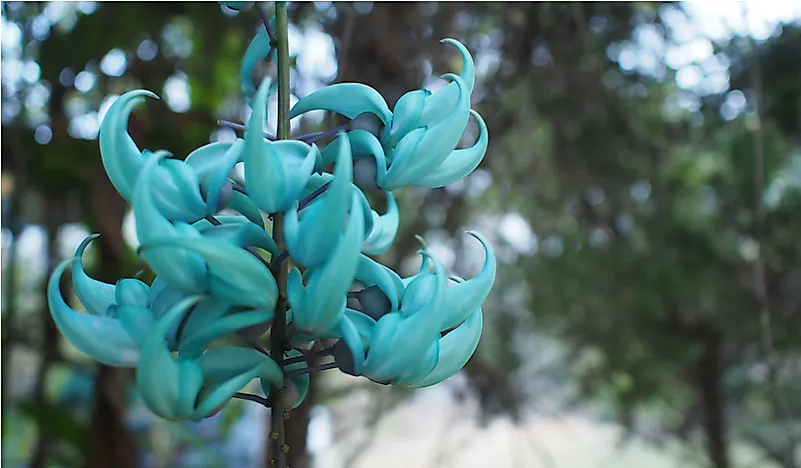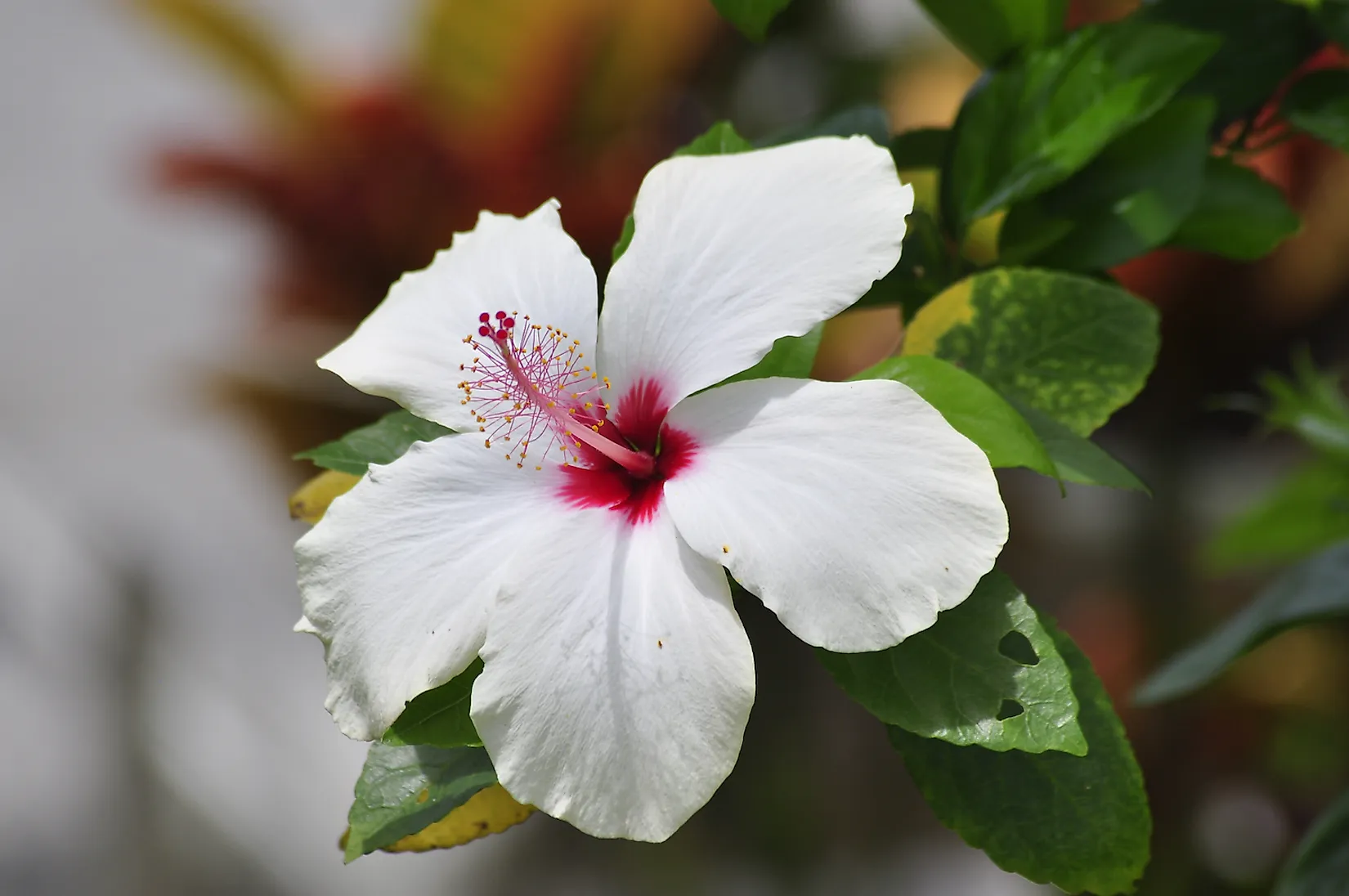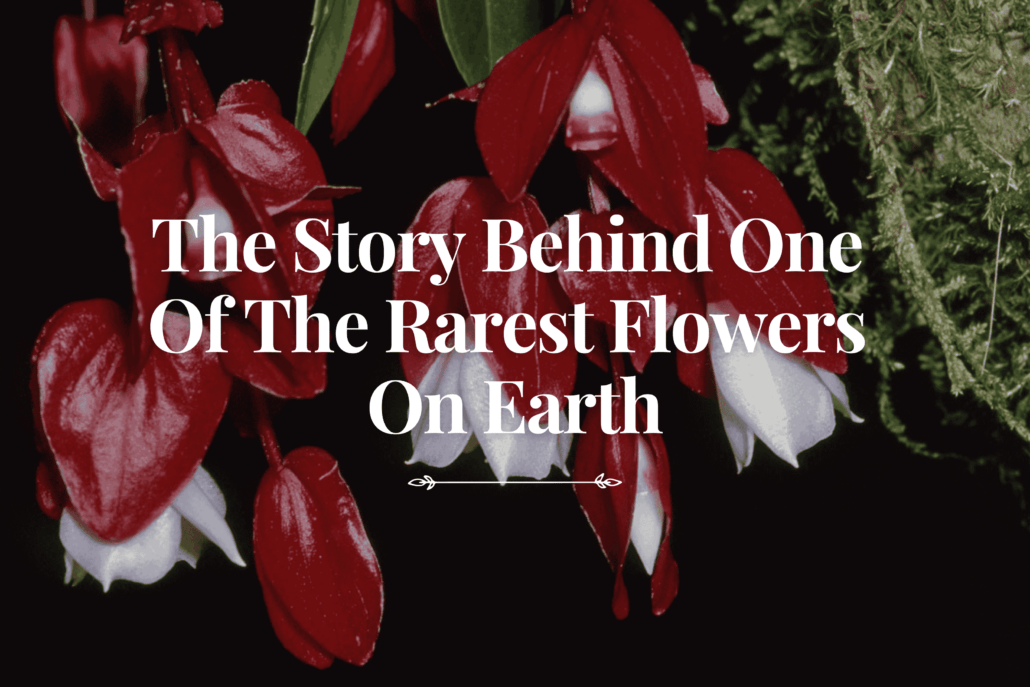Jewels of the Earth: Unveiling the Rarest Flowers in the World

The floral kingdom, a kaleidoscope of colors, shapes, and fragrances, is a constant source of wonder. While roses and tulips grace gardens worldwide, hidden amongst remote landscapes and carefully guarded in botanical collections lie flowers so rare, so elusive, that encountering them is a privilege reserved for a select few. These botanical treasures, often threatened by habitat loss, climate change, and human activity, represent the pinnacle of floral rarity and hold invaluable secrets to the biodiversity of our planet. Let’s embark on a journey to explore some of the most extraordinary and rare flowers in the world.
1. Middlemist’s Red (Camellia japonica ‘Middlemist’s Red’)
Perhaps the most famous example of floral rarity, Middlemist’s Red is a camellia that exists in only two known locations: a garden in New Zealand and a greenhouse in the United Kingdom. Brought from China to the UK in 1804 by John Middlemist, a nurseryman, this vibrant crimson flower has vanished from its native land, making it a poignant symbol of the responsibility humans have in preserving plant life. Its delicate, rose-like blooms are a testament to the beauty that can be lost if conservation efforts are not prioritized. The survival of Middlemist’s Red hinges on careful cultivation and propagation, ensuring that this striking flower doesn’t fade into botanical history.
2. Corpse Flower (Amorphophallus titanum)
Notorious for its enormous size and pungent aroma, the Corpse Flower, also known as the Titan Arum, is a spectacle of nature. Native to the rainforests of Sumatra, Indonesia, this flower boasts the largest unbranched inflorescence in the world, reaching heights of over 10 feet. Its putrid smell, reminiscent of decaying flesh, attracts carrion beetles and flies, which act as pollinators. The Corpse Flower only blooms every few years, and its flowering period lasts a mere 24-48 hours, making it a rare and fleeting event. Cultivating the Corpse Flower requires specialized conditions and expertise, further contributing to its rarity outside its natural habitat.
3. Jade Vine (Strongylodon macrobotrys)
Endemic to the rainforests of the Philippines, the Jade Vine is a breathtaking sight. Its claw-shaped flowers, a stunning shade of turquoise-green, hang in cascading clusters that can reach up to three meters in length. The unique coloration of the Jade Vine is attributed to the presence of anthocyanins, pigments that absorb yellow light, resulting in the vibrant turquoise hue. Deforestation and habitat loss have severely threatened the Jade Vine’s survival, making it increasingly rare in the wild. Conservation efforts are focused on protecting its natural habitat and promoting sustainable cultivation practices.
4. Franklin Tree (Franklinia alatamaha)
A botanical mystery, the Franklin Tree is a flowering tree that has been extinct in the wild since the early 19th century. Discovered in the Altamaha River valley of Georgia, USA, by botanists John and William Bartram in the 1760s, all known Franklin Trees today are descendants of seeds collected by the Bartrams. This beautiful tree produces fragrant, cup-shaped white flowers with prominent yellow stamens. The reason for its extinction in the wild remains unknown, adding to its mystique. The Franklin Tree serves as a stark reminder of the fragility of plant life and the potential for extinction, even of species that were once relatively common.
5. Rothschild’s Slipper Orchid (Paphiopedilum rothschildianum)

Considered one of the most expensive orchids in the world, Rothschild’s Slipper Orchid is a rare and highly sought-after species. Native to Mount Kinabalu in Borneo, Malaysia, this orchid is characterized by its distinctive slipper-shaped pouch and long, horizontal petals. It takes many years for Rothschild’s Slipper Orchid to reach maturity and bloom, contributing to its scarcity. Illegal collection and trade have further threatened its survival, making it a protected species. Conservation efforts are focused on combating poaching and promoting sustainable propagation practices.
6. Ghost Orchid (Dendrophylax lindenii)
The Ghost Orchid is an elusive and enigmatic flower that haunts the swamps of Florida, Cuba, and the Bahamas. This leafless orchid clings to trees, its roots blending seamlessly with the bark. Its ethereal white flowers appear to float in the air, giving it a ghostly appearance. The Ghost Orchid is incredibly difficult to cultivate, as it requires a specific fungus to survive. Its rarity and beauty have made it a target for poachers, further jeopardizing its existence. Conservation efforts are focused on protecting its fragile habitat and raising awareness about the importance of its preservation.
7. Kadupul Flower (Epiphyllum oxypetalum)
The Kadupul Flower, also known as the Queen of the Night, is a nocturnal beauty that blooms only at night and withers before dawn. Native to Sri Lanka, this fragrant flower is revered for its delicate white petals and intoxicating scent. The Kadupul Flower’s ephemeral beauty has made it a symbol of fleeting beauty and impermanence. Its short blooming period and nocturnal nature make it a rare and special sight to behold. While relatively easy to cultivate in suitable climates, the Kadupul Flower’s fleeting bloom contributes to its mystique and desirability.

The Importance of Floral Conservation:
The rarity of these flowers underscores the importance of plant conservation. These species, often endemic to specific regions, play crucial roles in their ecosystems. Their loss can trigger a cascade of negative effects, impacting pollinators, seed dispersers, and the overall health of the environment. Furthermore, rare plants often possess unique genetic properties that could hold potential benefits for medicine, agriculture, and other fields. Protecting these botanical treasures is not just about preserving beauty; it’s about safeguarding biodiversity and ensuring the long-term health of our planet.
Efforts Towards Conservation:
Numerous organizations and individuals are dedicated to protecting rare and endangered plants. These efforts include:
- Habitat Protection: Establishing protected areas and reserves to safeguard natural habitats.
- Ex-situ Conservation: Maintaining collections of rare plants in botanical gardens and seed banks.
- Propagation and Reintroduction: Propagating rare plants in nurseries and reintroducing them into their natural habitats.
- Combating Illegal Trade: Enforcing laws against poaching and illegal trade of endangered plants.
- Education and Awareness: Raising public awareness about the importance of plant conservation.

The future of these rare flowers depends on our collective commitment to conservation. By supporting these efforts, we can help ensure that these jewels of the earth continue to grace our planet for generations to come.
Frequently Asked Questions (FAQ)
Q: What makes a flower rare?
A: A flower can be considered rare for several reasons, including:
- Limited Geographic Distribution: It only grows in a small, specific area.
- Small Population Size: There are very few individual plants of that species.
- Specific Habitat Requirements: It needs a very specific environment to survive, making it vulnerable to habitat loss.
- Difficult Propagation: It’s hard to grow from seed or cuttings.
- Threats: It’s threatened by habitat destruction, climate change, poaching, or disease.
Q: Why is it important to conserve rare flowers?
A: Conserving rare flowers is important for several reasons:
- Biodiversity: They contribute to the overall biodiversity of our planet.
- Ecosystem Services: They play a role in their ecosystems, such as providing food and habitat for animals.
- Potential Benefits: They may possess unique genetic properties that could be valuable for medicine, agriculture, or other fields.
- Aesthetic Value: They are beautiful and contribute to the richness of our natural world.
Q: Can I grow rare flowers in my garden?
A: It depends on the specific flower. Some rare flowers require very specific conditions that are difficult to replicate in a home garden. Others might be more adaptable but still require careful attention. It’s important to research the specific needs of the flower and ensure that you can provide the appropriate environment before attempting to grow it. It’s also crucial to ensure that you are sourcing plants from reputable and ethical sources to avoid contributing to the illegal trade of endangered species.
Q: How can I help protect rare flowers?
A: You can help protect rare flowers in several ways:
- Support Conservation Organizations: Donate to or volunteer with organizations that are working to protect rare plants.
- Buy from Sustainable Sources: When purchasing plants, choose nurseries that propagate their own plants and avoid buying wild-collected specimens.
- Protect Habitats: Support efforts to protect natural habitats, such as forests and wetlands.
- Reduce Your Carbon Footprint: Climate change is a major threat to many rare plants.
- Educate Others: Spread awareness about the importance of plant conservation.
Q: Where can I see rare flowers?
A: Many botanical gardens and arboretums around the world cultivate rare and endangered plants. Check with local botanical gardens to see if they have any rare flower collections. Some rare flowers can also be seen in their natural habitats, but this may require traveling to remote locations and obtaining permits.
Conclusion
The rare flowers highlighted in this article represent just a fraction of the incredible diversity and beauty found within the plant kingdom. Their rarity serves as a poignant reminder of the fragility of our natural world and the urgent need for conservation efforts. By understanding the threats these plants face and supporting organizations dedicated to their protection, we can play a vital role in ensuring that these jewels of the earth continue to bloom for generations to come. The beauty and mystery surrounding these rare blooms should inspire us all to appreciate and protect the precious biodiversity of our planet. Let us remember that the fate of these extraordinary flowers rests in our hands, and it is our collective responsibility to safeguard their future.
